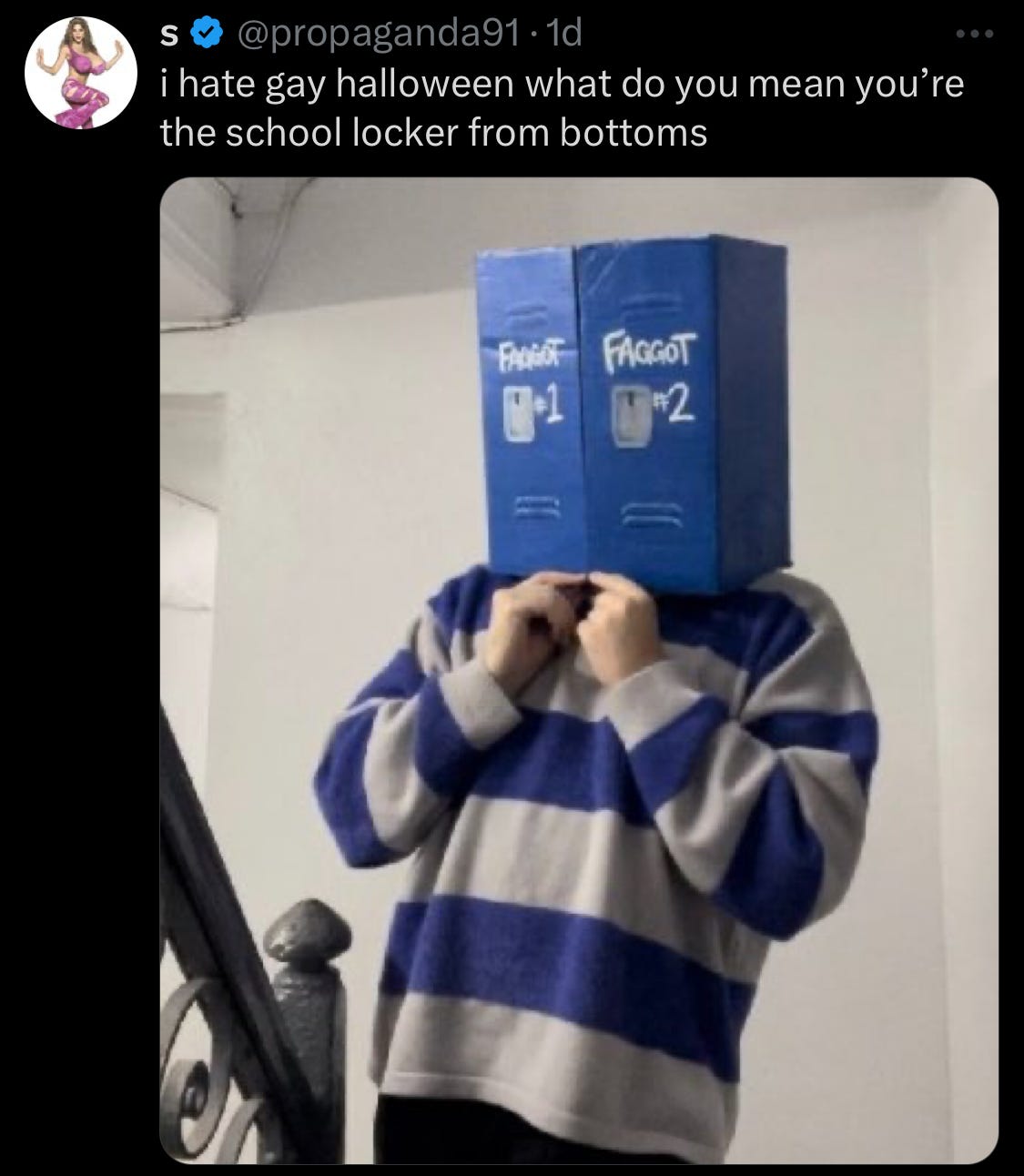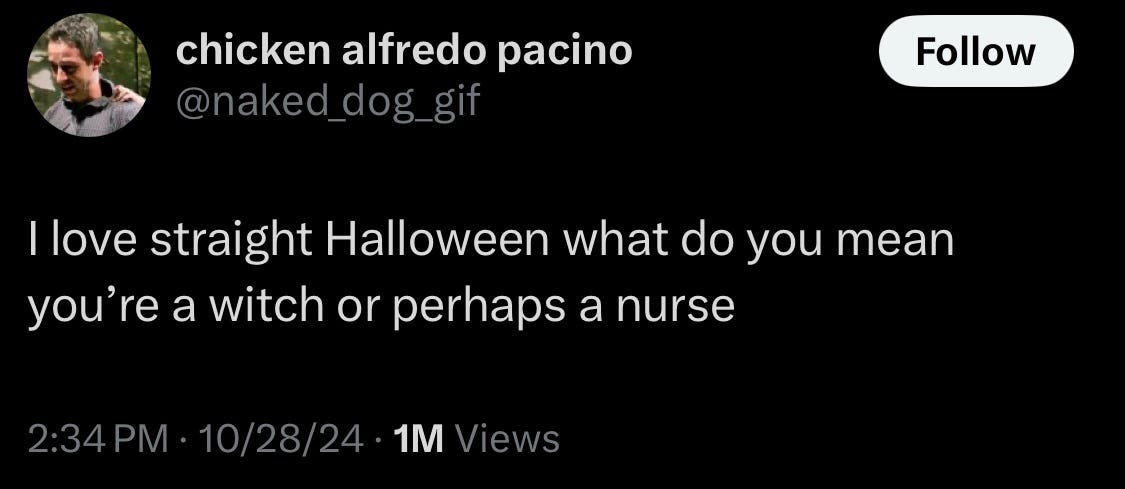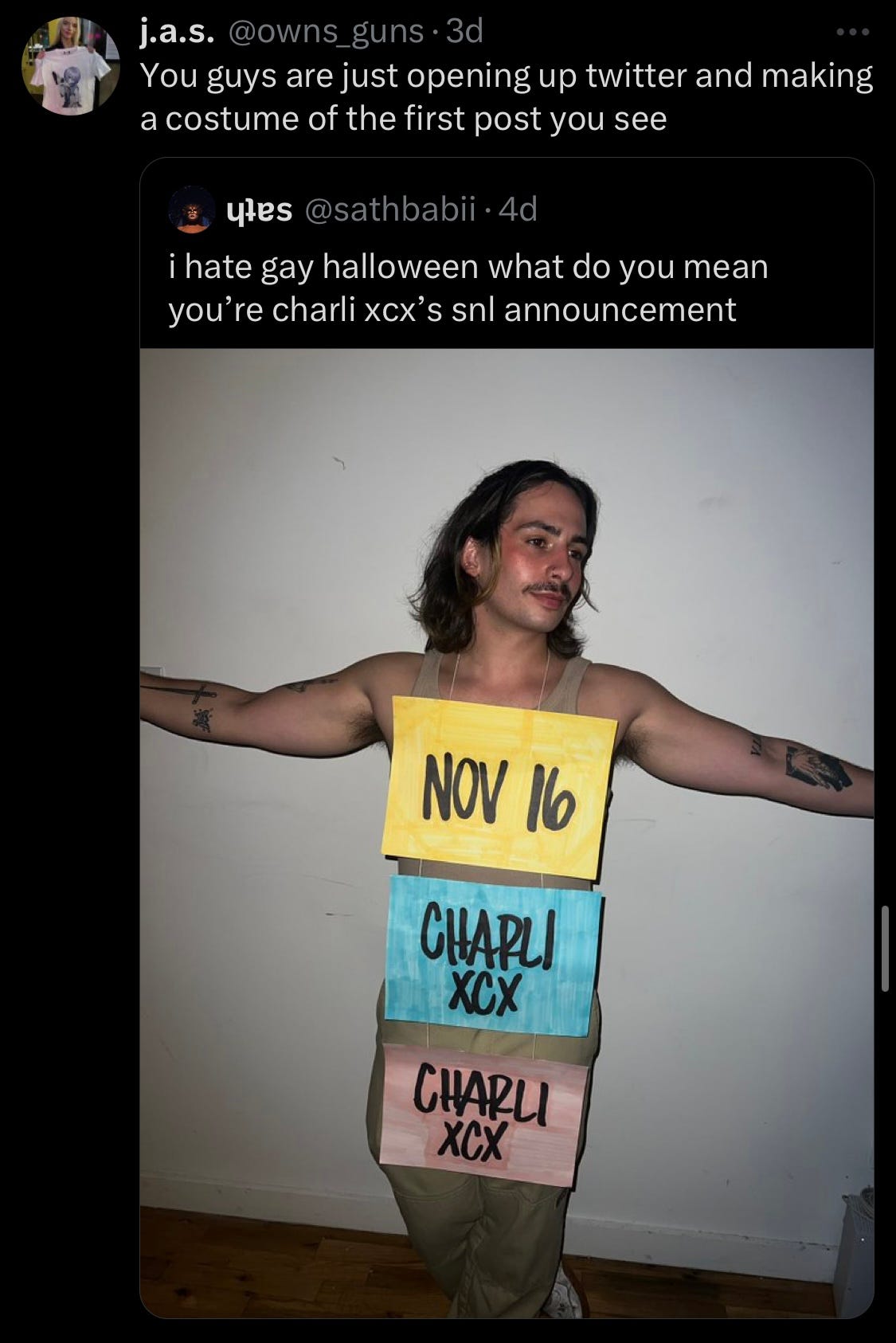I think it’s fair to say that this year there has been a definitive rise in costumes that require only the most niche explanation for those who are not chronically online or aware of some highly specific subculture from Twitter in 2014. Personally, I’d never seen the appeal of dressing as something that was so specific I’d have to explain it because it ultimately defeats the purpose of a costume. However, after seeing this years lineup via Twitter and Tiktok, it seems it’s becoming trendy to dress as something that may require a little bit of a backstory. I want to delve into this more, specifically how the idea of dressing up as something that is unknown to the majority but recognizable to a niche minority is changing the definition of Halloween ‘‘costumes’’ and how this further ties into queer culture and history.
GQ provides a meticulous list of last minute costumes for those who are chronically online while The New York Times offers drawing costume inspiration from Disney adults. It seems like wherever you look this year, Halloween in 2024 is about thinking outside the box and pulling inspiration from sources you may overlook at first glance. The goal is to seek out something so particularly niche or uniform that it bends the stereotype of the typical idea of a costume. Making an entire getup out of the idea of ‘Clairo shade’ or the Dress To Impress default avatar is pretty reminiscent of the purpose of drag, where something that was once mundane is transformed into a characterized costume. One of my favorite drag looks is Sasha Velour’s glamorous take on medieval unicorn tapestries, and is pretty representative of drag outfits and costuming.
To the untrained eye, the elaborately beaded collar, dramatically flared sleeves, fur hoof boots, and bloody horn may just look like a gaudy outfit suited for a jester in the 1800s. However, the entire purpose of this look, and others like it in drag, is to curate a theatrical caricature out of something. Drag breathes life into the monotonous and transforms it into a beautiful artistic representation of gender and sexuality expression. Its exact purpose is to be something that is unrecognizable to a heterosexual crowd and to celebrate the art of glamorously standing out amongst an audience of the majority.
Drag is also all about costuming on a budget. The exaggerated feminine features of the drag physique make it difficult to buy clothing from retail stores, and queens aim to have uniquely special looks for each performance. Drag’s history is rooted in making your own costume out of regular clothing and supplies, sourcing materials from craft stores to Walmart and Amazon. Sewing, altering, or bedazzling clothing allows the creative freedom for each queen to design a look that adheres to their personal style. Halloween costumes follow the same formula, especially within the height of the DIY era where almost every costume idea video on Youtube in the 2010’s consisted of costumes you could make at home on a budget (my favorites being the DIY queen herself, Bethany Mota). Especially in this years case with election day not even being a week after Halloween, making your own costumes reflects an anti-consumerism mindset in a time of high inflation. The high prices of living combined with making ends meet on minimum wage leaves no American wanting to spend more than $20 on a costume. This trend has encouraged people to see how creative they can get while also challenging people to see how far they can push the boundary of the definition of costume.
The homogeneous conformity of heterosexual dress is arguably what makes Halloween, to any individual, that more exciting. Historically called ‘‘gay people’s Christmas’’, there are a number of reasons as to why Halloween is a widely celebrated and beloved holiday. One big reason that I can think of that has been a specifically relevant contribution to the costumes of 2024 is that using the one day a year (I use the word ‘day’ loosely) to dress in an absurdly specific costume allows a break away from heterosexual culture and dress, and further the ideas of stereotypical costumes (that are, unsurprisingly, enforced by the heterosexual majority i.e. sexy nurse, sexy cop, anything of appeal to the male gaze).
A big catalyst for this new ‘era’ of niche costumes is, of course, the Internet where Twitter and TikTok have been the main playgrounds for this new trend. In a broader sense, this trend is a larger reflection of how people, specifically the queer community and other minority groups, engage and interact with social media. Minorities especially interact with the Internet for the purpose of seeking refuge through curated identities and building community amongst a digital landscape (I’m going to use this as an excuse to plug my favorite book ever that discusses exactly this, called Glitch Feminism by Legacy Russel).
If you really want to psychoanalyze the effect of all of this, I think it’s a big reflection on our desire to celebrate differences, challenge norms, and rewrite definitions that stem from cis-hetero systems. Even though on the surface it’s only Halloween costumes, beneath lies a much deeper and important rhetoric. Please keep being absurd, it’s good for you!!!








